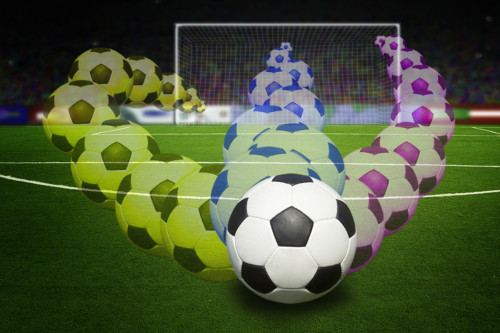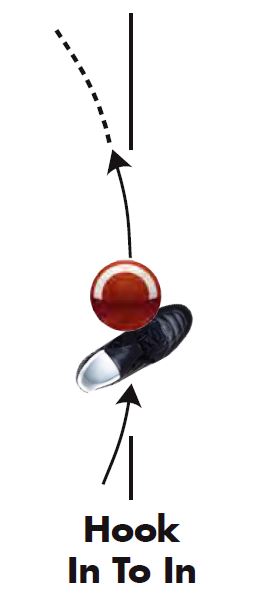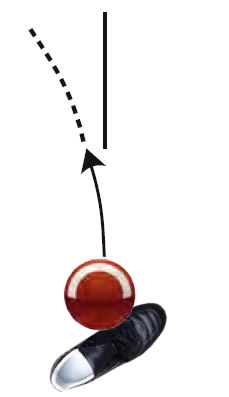How to stop hooking kicks
One of the most common issues with field goal kicking that I see with kickers is the propensity to ‘hook’ the kick. Whether I’m working with a beginner or an advanced kicker, more right footed kickers seem to naturally miss the kick to the left than they miss to the right.
Keep in mind, I’m not referencing a ‘pull’ when the ball starts left and stays left. A hook, is when the ball seems to ‘curve’ in the air so maybe it starts straight but then gradually ‘curves’ left (for a right footed kicker.)
Even if a kicker makes 10 practice kicks in a row, many of those kicks (if not most) are generally on the left side of center when the ball passes through the posts. Often the ball will start right down the middle and then the ball curves left slightly even if the kick is good, etc. So, why is this such a common thing for kickers?
Keep in mind, there are actually a few ways to misfire a kick to the left side of the posts for a right footed kicker….a hook is just one of them. A hook is identified by a ball that seems to physically ‘curve’ as it moves forward so even if the kick started ‘down the middle’ a hook would be the result of that ball eventually ‘curving’ out wide left and no good.
Well, as with a golf swing, flight path direction and movement is generally the result of a few factors. The first is often plant foot position, the second is foot position on the ball at contact and the third is swing path of the leg itself.
Most missed kicks, (and there are 6 possible combinations I see most often) are some result of the combination of the swing path (out to in, in to in, in to out) along with foot position (inside, center, outside) at impact. Of those six possible misfire combinations, I’m going to touch on the hook in this post.
Of course, it doesn’t help that most beginning kickers are used to kicking a soccer ball. In soccer, we actually practice and use all of these combinations on purpose. However, in football, we only need one consistent swing path and one consistent foot position to send the ball in a relatively straight flight path.
A soccer ball is round, a football is not
I’d say that many of the bad habits that can form inconsistencies (especially the hook) stem from soccer for most kickers. A soccer ball is nice and round, unlike a football.

It’s much more forgiving with foot contact because it’s going to roll, spin and basically move forward no matter how our foot lands on it.
The soccer ball also doesn’t reflect an ‘ugly’ kick the way our American football does, so we can be much more ‘loose’ with our contact. A soccer ball is actually supposed to move in different directions both left AND right because most of the time we are actually trying to move the ball in one way or another.
Forcing the soccer ball to spin left, spin right, back spin, top spin or knuckle actually requires a fair amount of differing foot placement and contortions at the time of contact. Not so with a football….we need one kick and one rotation. We just need the ball to move in a straight line on our field goals. There is no need to fade or draw around objects as we might in soccer or golf.
What causes the hook?
 After kicking with the loose and variable foot contact in soccer, how do we iron out our field goal contact to eliminate these wild variations resulting in the hook?
After kicking with the loose and variable foot contact in soccer, how do we iron out our field goal contact to eliminate these wild variations resulting in the hook?
In my experience, when a student is hooking a field goal left, it’s generally the result of plant foot placement, contact (foot position) and/or swing path (the line the foot follows through the ball). Sometimes, the swing may start and finish (inside to inside) well but the foot placement at impact is simply too far outside the ball. Other times, the kicker adds insult to injury by adding a faulty swing path (outside to inside) in addition to the poor ‘heal up’ contact with the foot.
As I always tell my students, kick right (right side of the ball) to go left (send the ball left), and left to go right. I know this seems like an over simplification, but taken to extremes the basic concept is simple and it’s the same with a soccer ball. There is a complete inverse relationship.
The field goal hook (missing left for a right footed kicker or missing right for a left footed kicker) most often times is the direct result of our foot naturally ‘wrapping’ around the outside of the ball.
The outside? Yes, the outside of the ball for a right footed kicker is the right side of the ball. If we were to draw an imaginary line on the ground through the middle of the ball toward your target, you’d be standing on the ‘inside’ of that line (it’s the side you are standing on naturally as you approach the ball to kick it.)
Now, there can be a number of other technical factors that play into why a kicker swings around the outside of the football (planting too close, too far back, etc) but for now let’s just focus on foot placement and swing path.
Inside out (low and inside)
When I’m working with a kicker who is hooking the ball more often than not, the first thing I want that kicker to do is change foot position on the ball.
However, this can feel unnatural many times so I start by changing the target that kicker is focusing on during the practice kick. I disrupt the goal of the practice kick by asking the kicker to pick a different target.
The key however is not to realign the kick (keep those steps straight ahead!), that would defeat the purpose of the exercise. I ask them to keep steps the same and that same center alignment that they had initially, but then kick to different spots using that same center alignment (hint: they must now naturally/logically change foot position to alter the flight path.)
 For instance, I’ll ask them to intentionally kick the ball to the right of center, or even at the right post out of a center alignment. I also ask them to move to the center of the field and close enough that it forces a bit of a drastic angle, say, an extra point.
For instance, I’ll ask them to intentionally kick the ball to the right of center, or even at the right post out of a center alignment. I also ask them to move to the center of the field and close enough that it forces a bit of a drastic angle, say, an extra point.
This simple exercise is a quick lesson in foot placement, in changing the point of attack for the foot on the ball. Understanding that a kick is comprised of many moving parts that can be individually manipulated (like kicking a soccer ball) begins to shed some light on why a ball’s flight path is doing what it’s doing.
Keep in mind, for a right footed kicker, a kick to the left is generally not JUST a hook. You can also pull the ball left. You can even pull/hook the ball. Each of these flight paths left of center are the direct result of different combinations of swing path and foot position. We will look at all of these combinations in future posts.
For now however, the next time you hook a kick in practice, follow that kick by keeping your alignment and swing the same. Only this time, strike the ball more on the inside quarter panel of the football.
It may feel unnatural at first, like the ball is always going to go to the right. However, as you get used to the feel, that full swing will actually result in a foot placement that is closer to center than it feels and the ball will fly straight and true!

